It is the history of Georgetown on the island of Penang, founded by the British merchant Francis Light in 1786, that has made it what it is today: a multicultural city where mostly Malays, Indians and the Chinese live together in a more peaceful manner than I could have ever imagined.
Walking through its streets, it is just as easy to find a mosque as a Hindu or Chinese temple. And all this rich mix in a city where its colonial past is still evident in its architecture and some of the churches.
With such an amalgamation, no one should be surprised that this Malaysian city was declared a World Heritage Site in 2008.
Georgetown is the capital of the state of Penang, in northern Malaysia. It was founded by the British explorer Francis Light and became an important trading port on the Strait of Malacca. This attracted numerous immigrants from China, India, Arabia and Europe.
What happens when so many people from different cultures come together in one place? The result is a city like Georgetown, where we find a fusion of Chinese, Malay, Indian and British architectural styles.
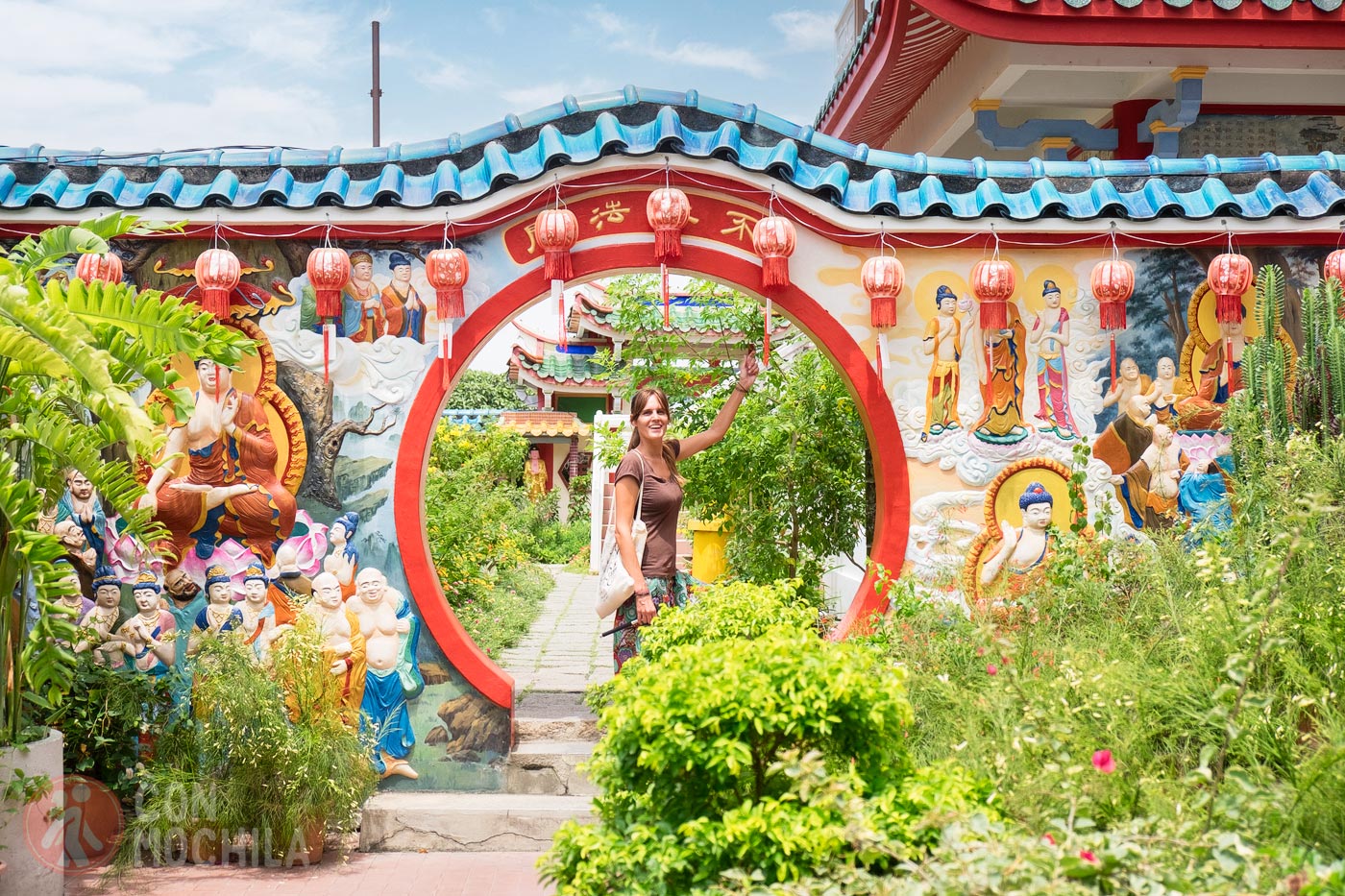
Over the decades, since its independence from Britain in 1957, Georgetown has preserved its cultural and architectural heritage, earning UNESCO World Heritage status in 2008. Walking through its streets and tasting its delicious street food will undoubtedly remind you of all this history.
We could say that the climate in Georgetown is very similar to that of Kuala Lumpur, as it also has an equatorial climate, which means that it has high temperatures and humidity, and it can rain all year round. Therefore, we recommend light clothing and a raincoat, just in case. Below we will explain which are the two main seasons so you can plan your trip:
For tourism purposes, you can enter Malaysia without a visa. Usually, you’re allowed to stay for up to 90 days upon arrival. If you intend to stay beyond 90 days or are visiting for reasons other than tourism, you need to obtain a visa from the nearest Malaysian diplomatic office prior to your departure.
It goes without saying how important it is to travel to Malaysia with a good insurance. We were the first ones to offer the famous 5% discount on IATI Insurance, but you also have it available with Heymondo Travel Insurance.
Follow the links below to get a discount on their website:
We entered Malaysia by land from Thailand, but depending on the area you are in, you can choose various ways to get to Penang and specifically to Georgetown.
Penang Airport is connected to several domestic destinations such as Kuala Lumpur, Kota Kinabalu or Langkawi and also international destinations such as Singapore or Thailand. From the airport there are several local bus lines to Georgetown.
Butterworth Bus Station and Train Station are connected by bus/train lines to most Malaysian cities. Once at either station (they are next to each other), you can take the ferry that takes you directly to Georgetown in 10-15 minutes or a scheduled bus to cross the bridge to Penang.
We’ve left you a couple of links for buying tickets online from Kuala Lumpur, but once inside you can try to do it from other cities.
Ferries to and from Butterworth arrive at Raja Tun Uda Terminal, east of Georgetown, near Lebuh Victoria. They take about 20 minutes and are a nice way to experience Georgetown and Penang for the first time.
While many hotels, guesthouses, and restaurants in Thailand offer free Wi-Fi, some travelers prefer or need a constant connection. We’ve included details on obtaining a eSIM Malaysia card with unlimited data. If you want to get one directly, use the following link (with a discount):
If there is one thing that has made this city famous in recent years, it is the graffiti that decorates its walls. The artist Ernest Zacharevic, with his enormous creativity and works, contributed to beautify the streets of Georgetown on the island of Penang.
We had never seen so much concentrated urban art and, considering the fun it provided for photo opportunities- especially with many pieces incorporating external elements like motorcycles or bicycles- the walk was incredibly entertaining.
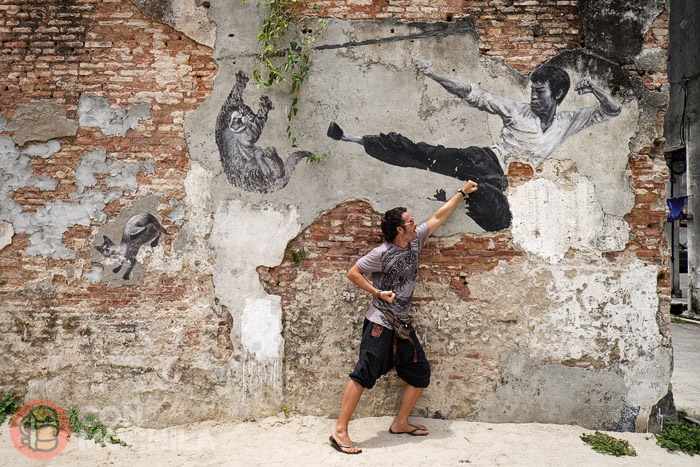
Finding each drawing was as easy as grabbing a map from the ones they had in the hostel (most maps mark where the main paintings are located), and going out to look for them. If you walk carefully along the walls you will be surprised to find many other drawings besides the most photographed ones.
Another interesting feature of Georgetown is the iron caricatures found on each street, accompanied by short texts like vignettes that tell anecdotes from its history. These works are the creation of the author Tang Mun Kian.
Just like in Singapore’s Little India, we found the Indian quarter very “soft” – so much so that we renamed it Light India . It’s true that the Bollywood music played on huge speakers on the corners reverberates in your head as you walk around, and the women’s saris fill the streets and shop windows with colour.
t’s true that you can eat your fill for very little money and that the atmosphere smells of spices, but… it’s definitely too clean and there are no cows, dogs or monkeys on the street.
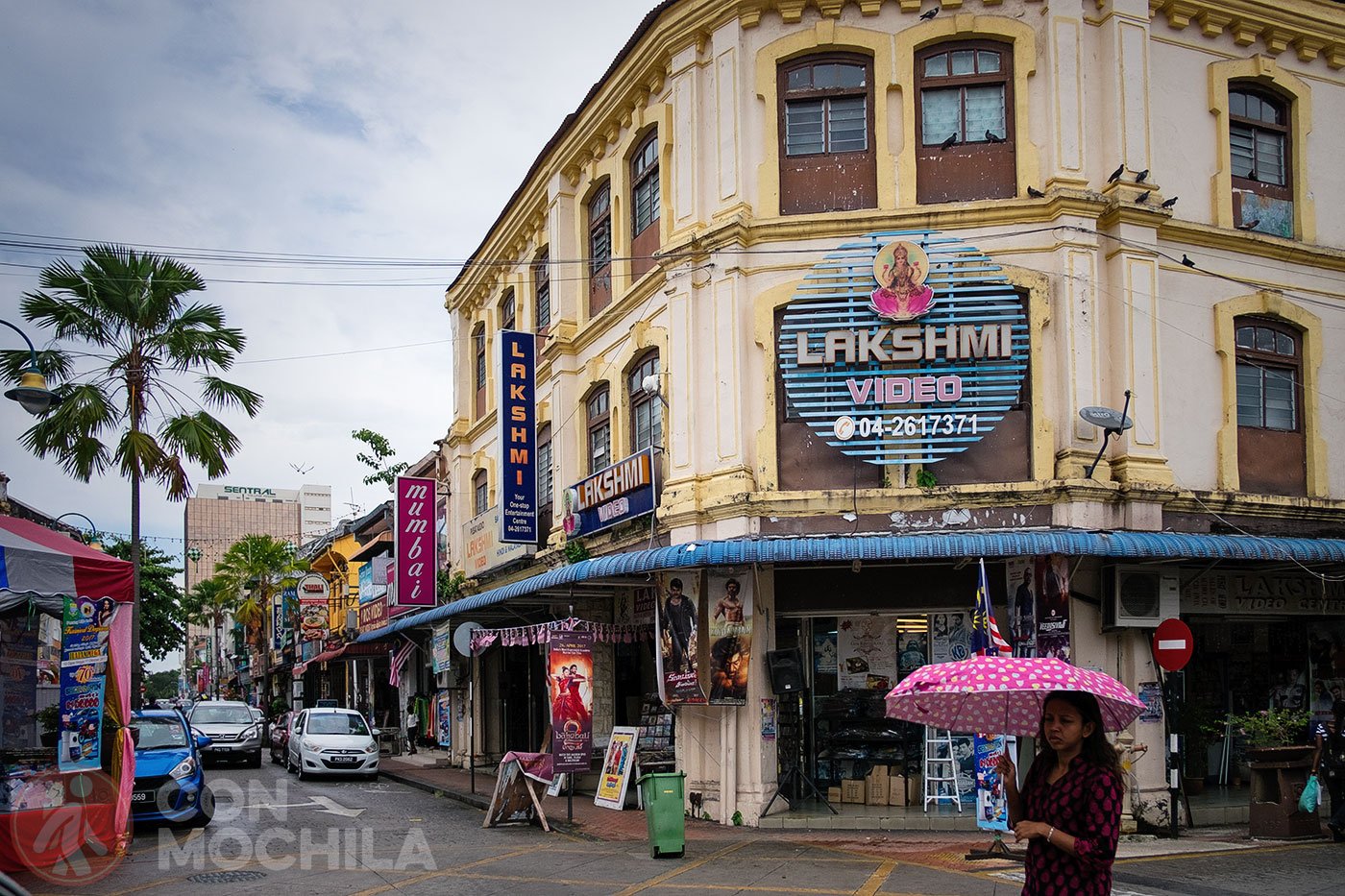
However, walking through one of these neighborhoods is a good alternative for those who think they would not be able to cope with India but are curious to experience what it is like.
Despite its simplicity, we enjoyed strolling around the neighborhood and were seduced by its restaurants. Savoring delicious thalis, eating with our hands and on a banana leaf, reminded us how much we love this food.
In Georgetown there is also a Chinatown where shops have signs that are impossible to decipher, dragons protect the temples, and red lanterns hang from almost every facade.
However, unlike other similar neighborhoods, it is not as overwhelming and walking through its streets is charming: Chinese temples with their endless and fantastic images, the smell of incense and food always ready in busy stalls.
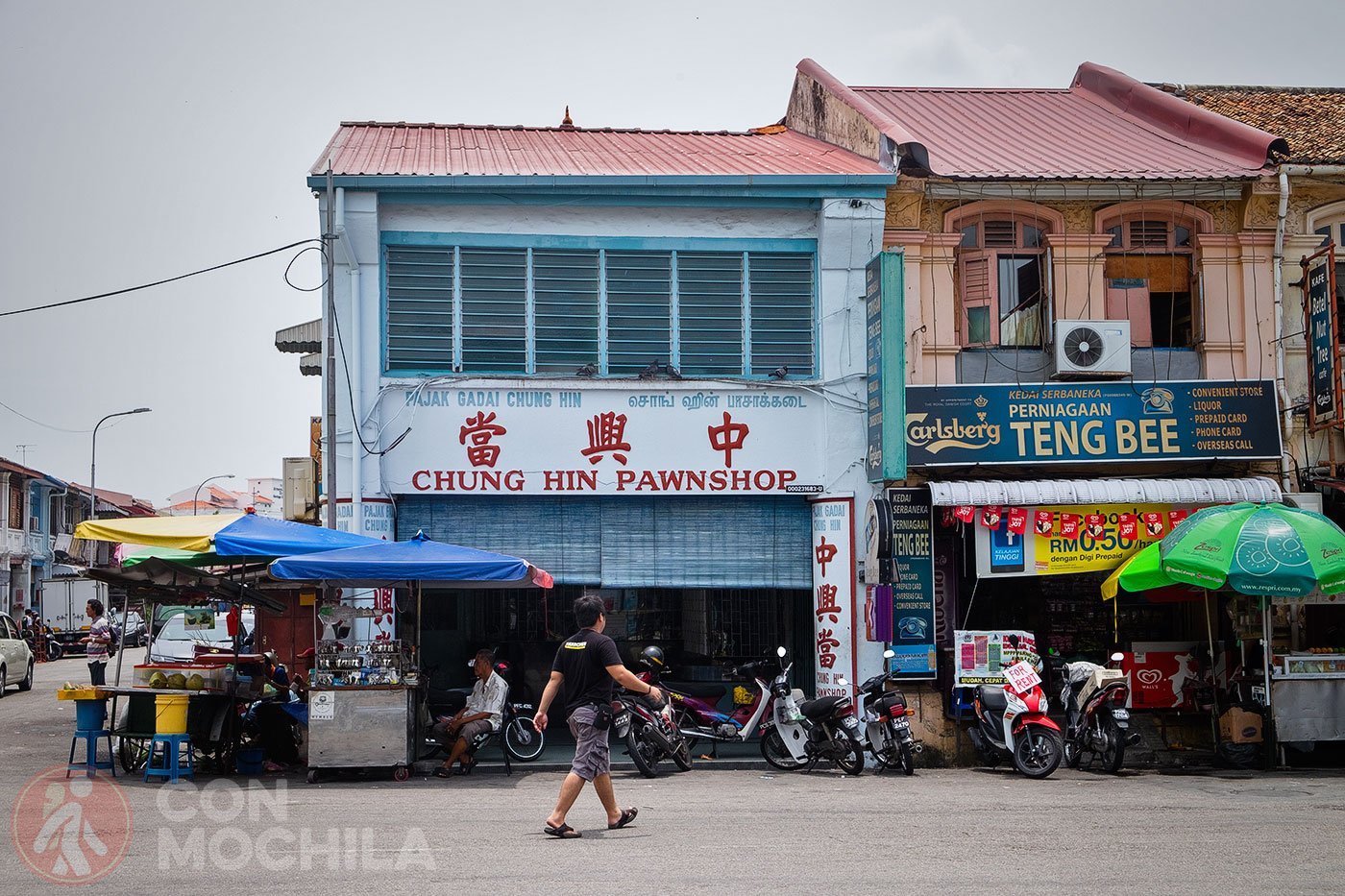
Its two main streets are Lebuh Chulia and Love Lane, both of which are packed with reasonably priced accommodation and plenty of expensive cafes and bars. However, at night there are street food stalls where it is very easy to enjoy the famous laksa, noodle dishes and shakes at good prices, which is why it is packed to the rafters.
Without a doubt, if Georgetown is known for anything other than its graffiti and cultural amalgamation, it is for its food. It’s no wonder that some call it “a food paradise”, because I may not know about everything else, but when it comes to food, there’s plenty to eat, and it’s really good.
I admit that with so many Indian restaurants, it took me a while to try Malaysian food. After almost a week, I still didn’t know what “mee goreng” was, but when there is a masala dish, a naan or a dosa, it sets the rest of the dishes apart from the rest of the world.
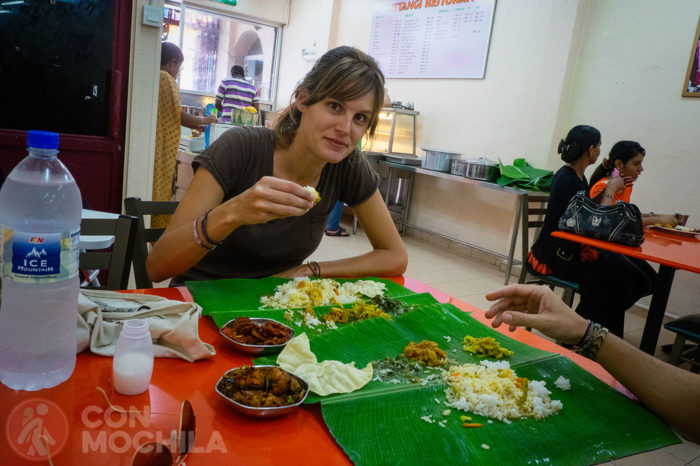
The city has a gastronomic offer for all budgets and palates, but obviously the most popular cuisine is Malaysian, Indian and Chinese. Further down you will find more information about eating in Georgetown.
This Buddhist temple, which was built in 1891, is one of the largest in Southeast Asia and the largest in Malaysia. Its interior is enormous, with several levels filled with images of Buddha everywhere, but to get to it you first have to go through a network of narrow streets full of souvenir shops.
Its pagoda is built in different architectural styles: Thai, Chinese and Burmese. Despite being quite colorful and beautiful, it left me quite indifferent, almost as if I had taken a walk through the Chinatown of Port Aventura.
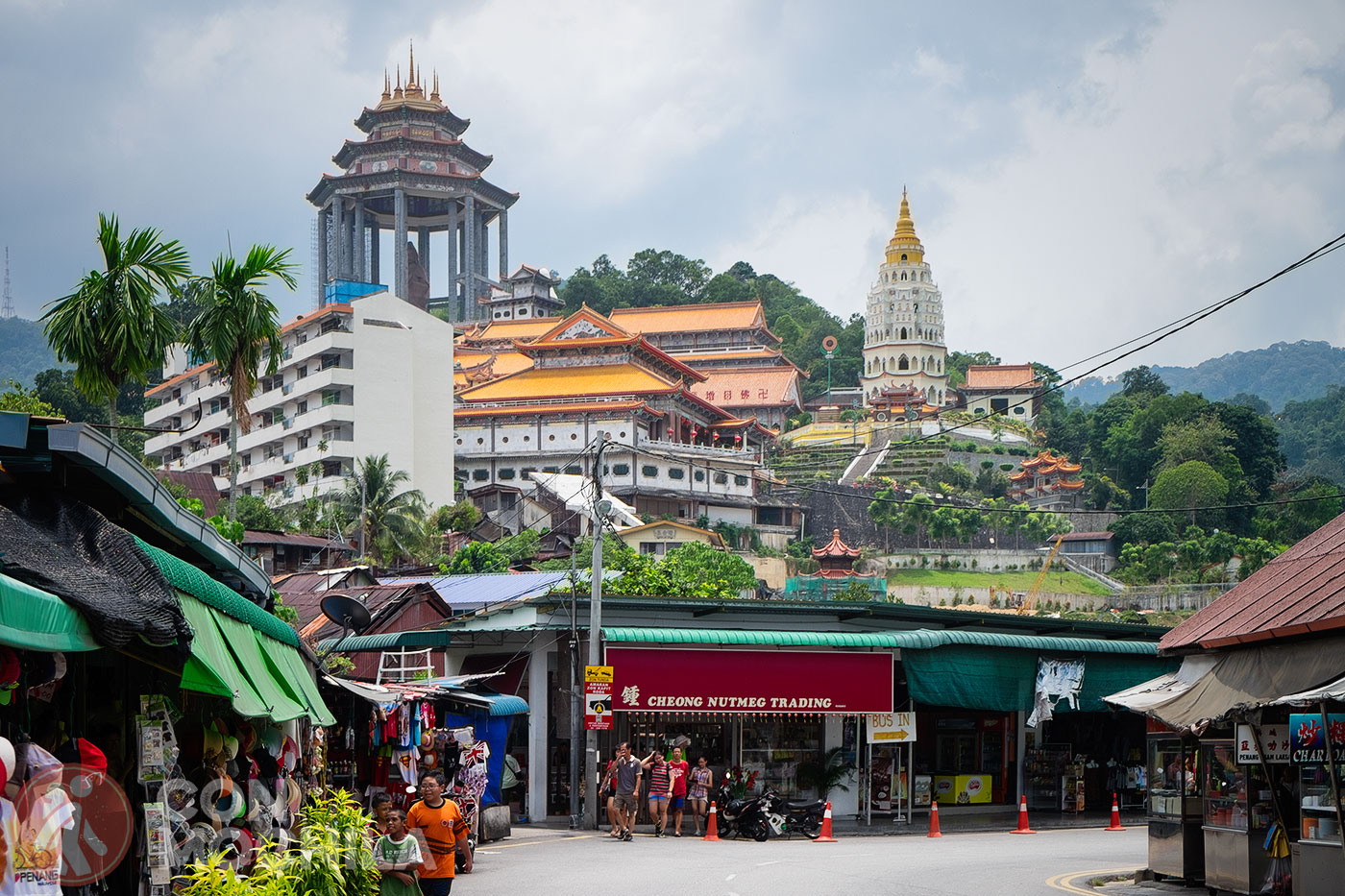
The fact that we had to pay to use the elevator to the top, and after seeing that the pond had so many turtles that they barely had room to swim, did not make me grow fonder of the place. It is located on the outskirts of Georgetown and several buses go to Kek Lok Si: 201, 203, 204, 206, 306 and 502.
This temple, one of the largest in the country, is a building belonging to the Leong San Tong clan, wealthy merchants from the Chinese province of Hokkien who settled between Malacca and Georgetown in the 17th century. The building still contains historical elements such as a theatre and some merchants’ houses built around a central courtyard.
The complex features beautiful carvings and ornate beams, made by master craftsmen from China.
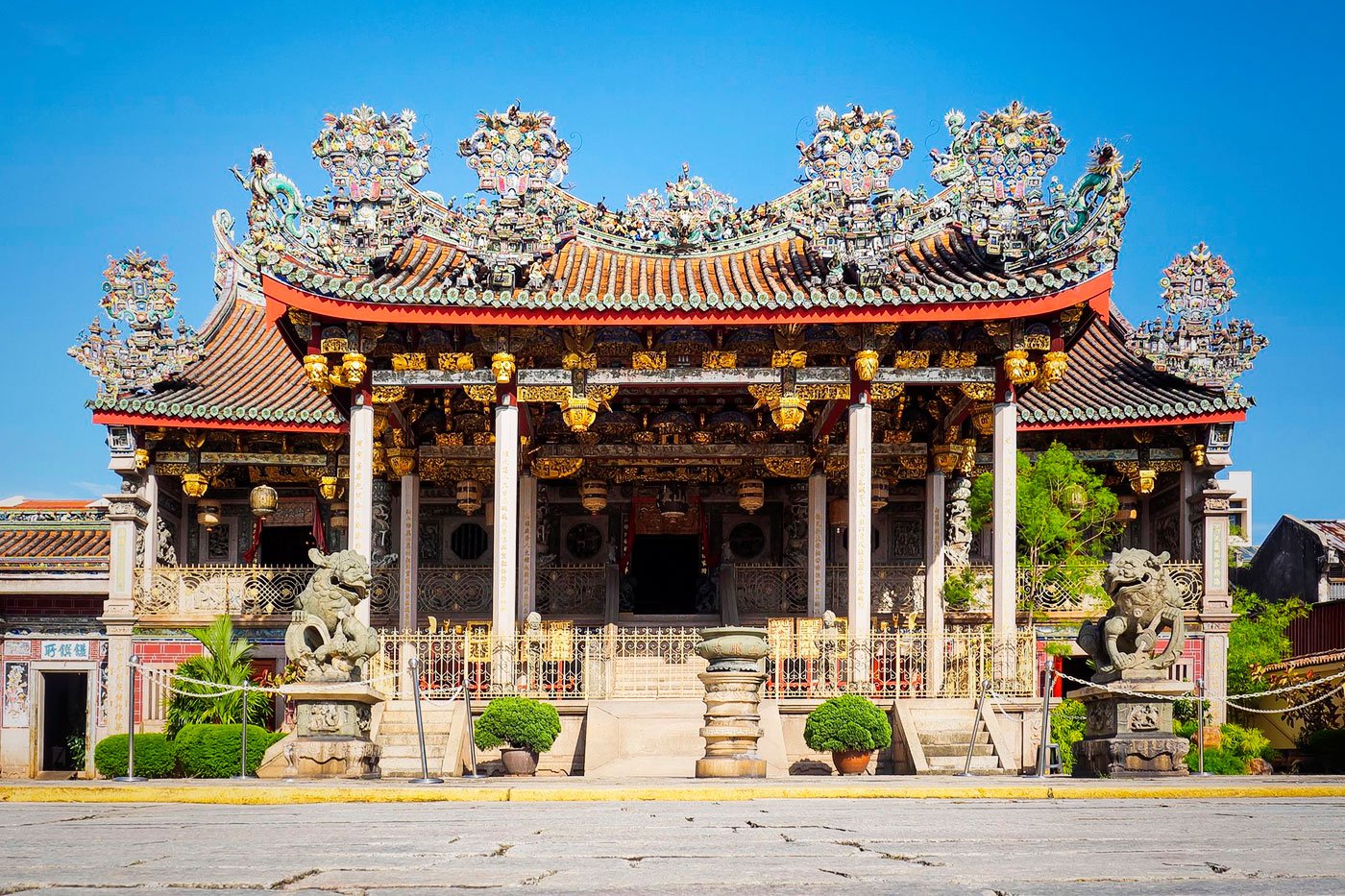
Like some other temples, Khoo Kongsi is no longer the centre of major activities as it was in its heyday, although Chinese operas are still performed there from time to time. It is located in the old part of Georgetown amidst lots of small alleys.
This is a visit that we highly recommend even to those who are not very fond of museums, as it helps to understand the history of Georgetown through texts, murals, clothes and different objects that illustrate it. In the different rooms you can see the contribution of each culture to the city in a very entertaining way and there are even replicas of traditional houses and rooms.
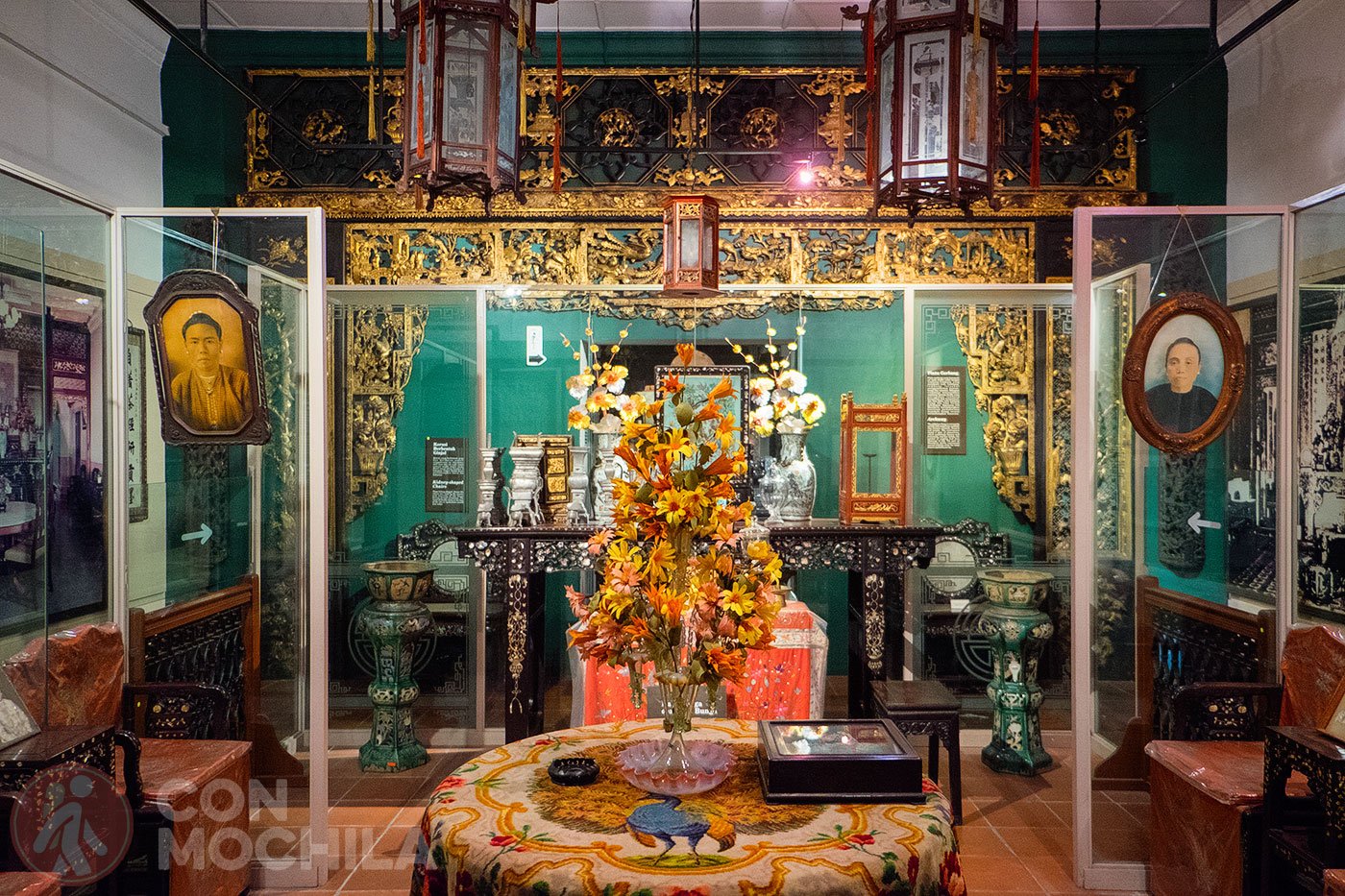
An hour is more than enough to visit the Penang Museum and it is also a good option when the midday heat is oppressive and you need shelter or something to do without dying in the attempt. We were entertained and learned many things that the guide did not tell us.
This greenish mansion, built in 1893, is now a museum dedicated to the cultural heritage of the Peranakan people of Penang, also known as Babas and Nyonyas, a part of the Chinese community established between Penang, Malacca and Singapore.
Pinang Peranakan Mansion, abandoned for decades and recently restored, replicates a typical house from 100 years ago, displaying traditional objects, collections and architectural styles, as well as adapting some European features into its interior.
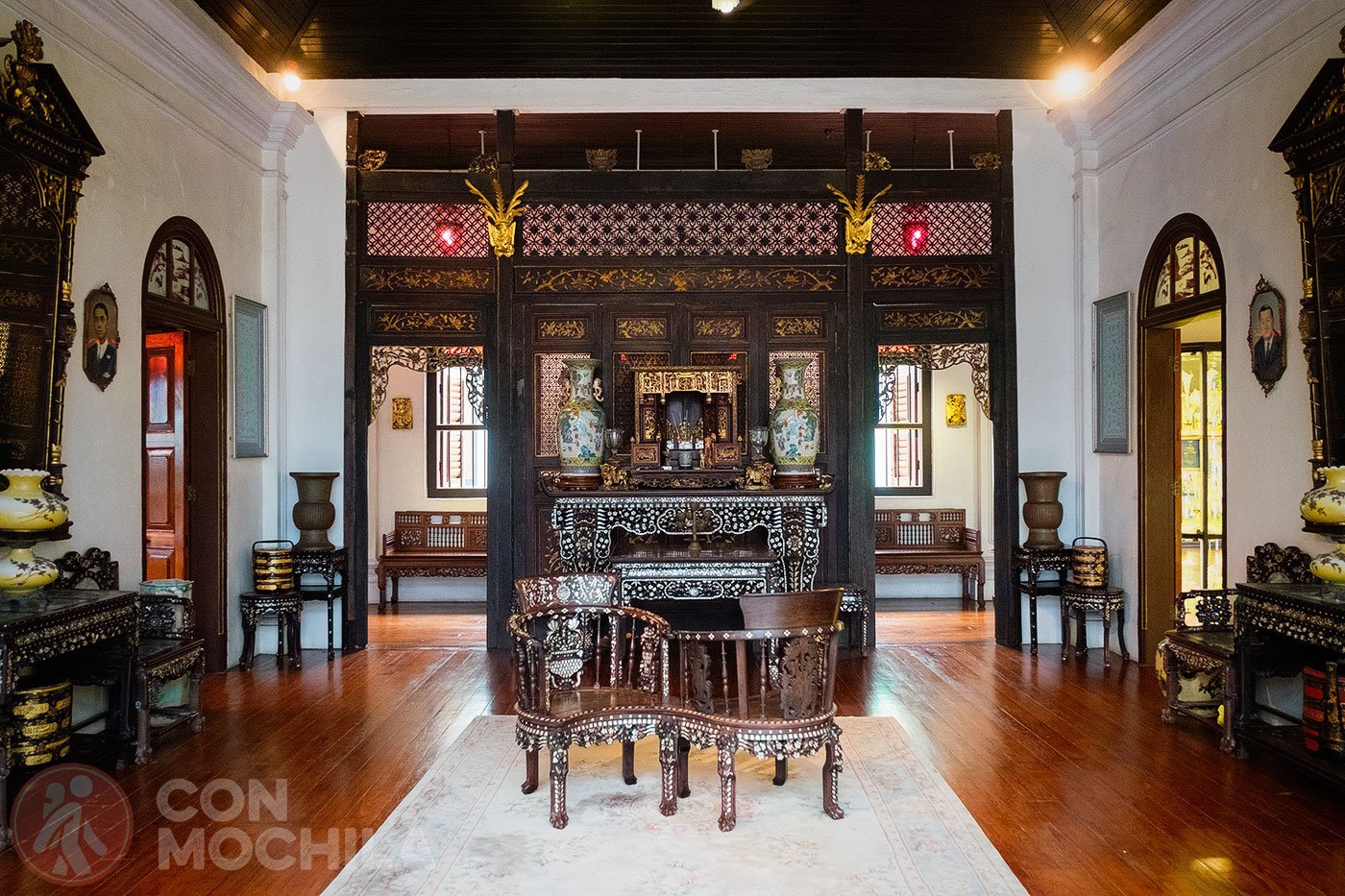
Right next door, there is a temple dedicated to the Chinese tycoon Chung Keng Quee who converted this house into his residence and office.
Around 1900, the Chinese merchant Cheong Fatt Tze ordered the construction of a home and business center for himself and his descendants, following an eclectic architectural style that persists especially outside China.
In 1990, his descendants sold the house to a group of city-based conservators who restored it with the help of Penang and international craftsmen and converted it into a hotel-museum.
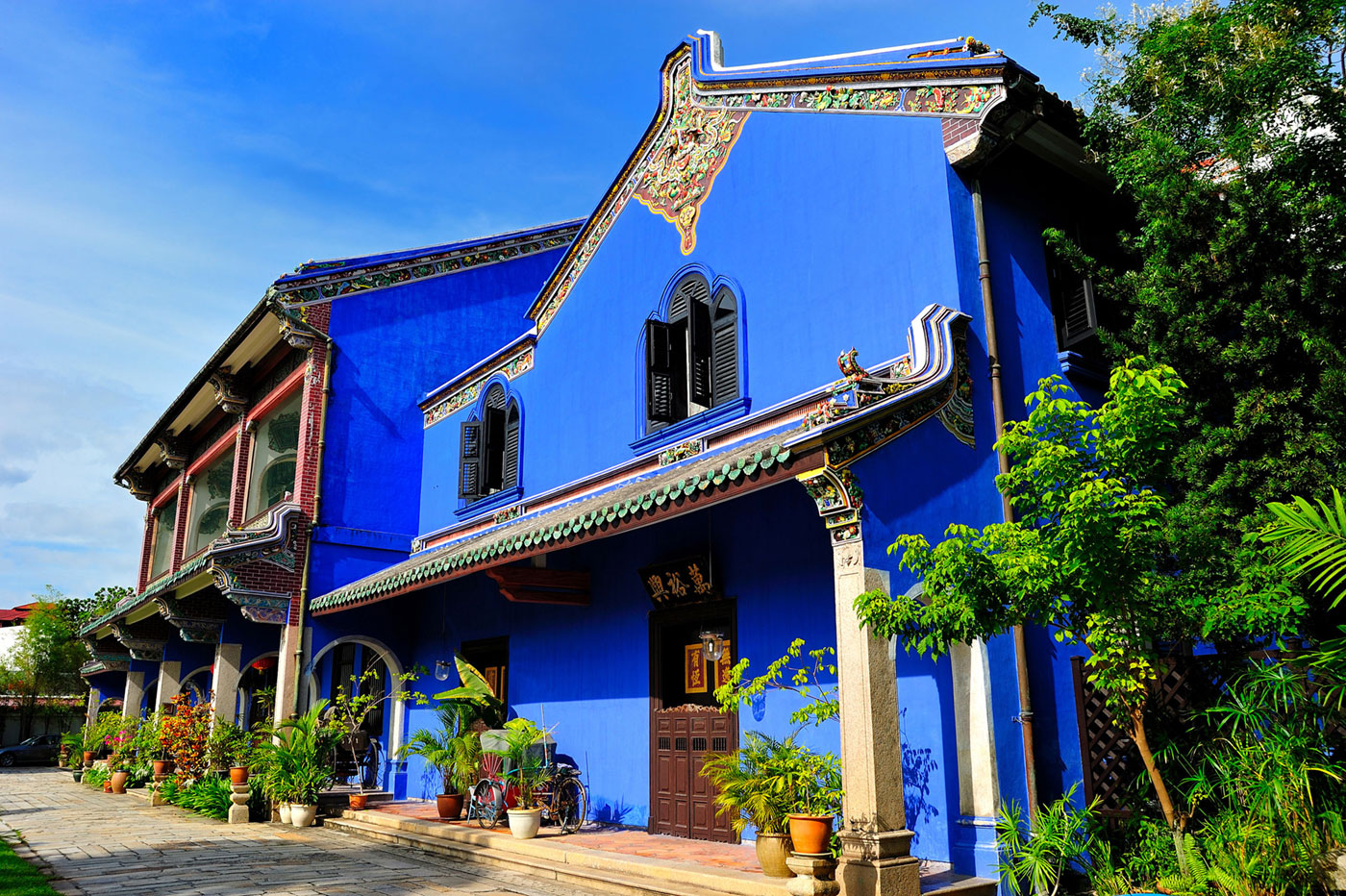
This is one of the buildings that contributed to Georgetown being declared a World Heritage Site.
This Siamese temple was built in 1900 on land donated by Queen Victoria of England, to promote ties between the British government and the Thai government of the time.
The architecture of Wat Chayamangkalaram comprises Chinese, Thai and Burmese styles and there are different sanctuaries within the complex.
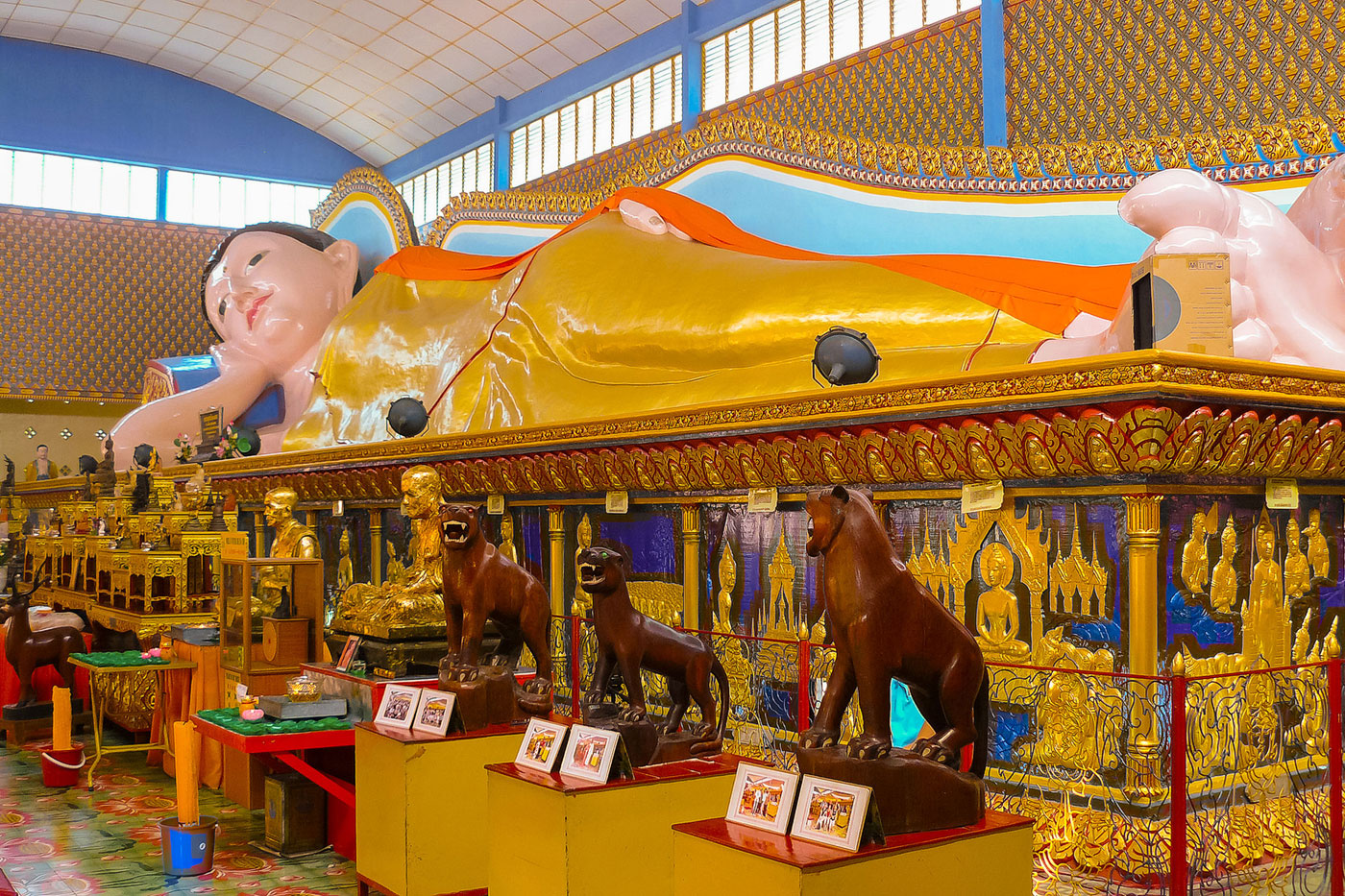
At the entrance, two dragon serpents greet you and inside there are numerous statues of Devas and other mythological creatures guarding the temple, as well as urns containing the ashes of devotees.
The reclining figure of Buddha it houses is one of the largest in the world, measuring 33 metres in length.
The oldest Hindu temple in Penang (1801) is dedicated to the Hindu god Subramaniam. When the Tamil Indians arrived in Penang, they built a small shrine which was later extended to what is now Sri Mariamman.
Its façade, built by craftsmen and sculptors brought from southern India, is a typical example of traditional architecture, with precious stones and a colourful four-level tower representing Mount Meru.
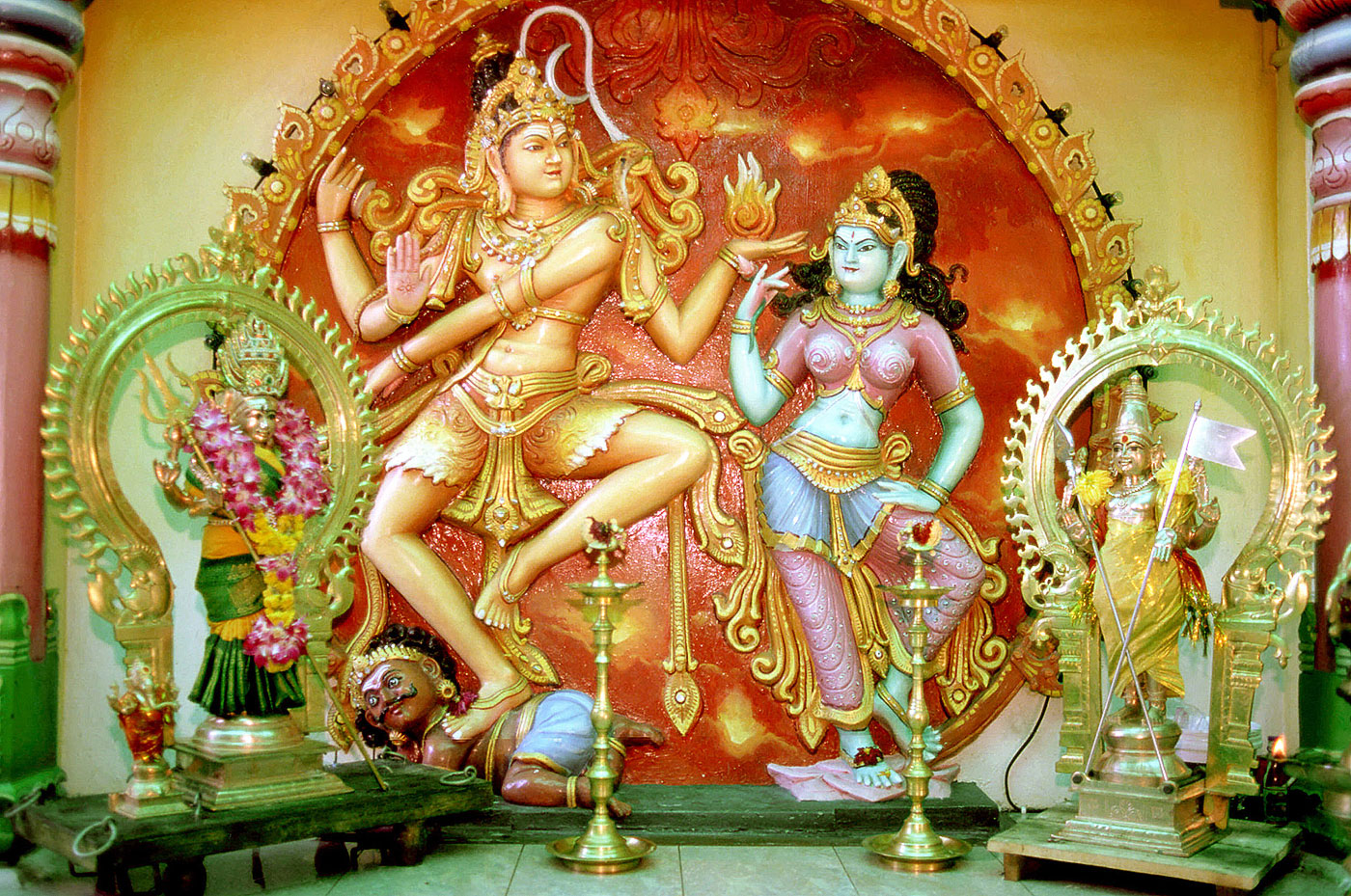
Ceremonies are held inside every day and there are numerous statues of lions and deities. If you want to attend prayer very early in the morning you should check with the priests as it is considered an insult to enter without having obtained permission to do so outside of official visiting hours.
This star-shaped fort was built by Captain Light of the British East India Company in the late 18th century and is named after Charles Cornwallis, who helped end the American Revolution.
Initially, the material used was wood, but in 1810, the stone fort that can be seen today was built using slave labor.
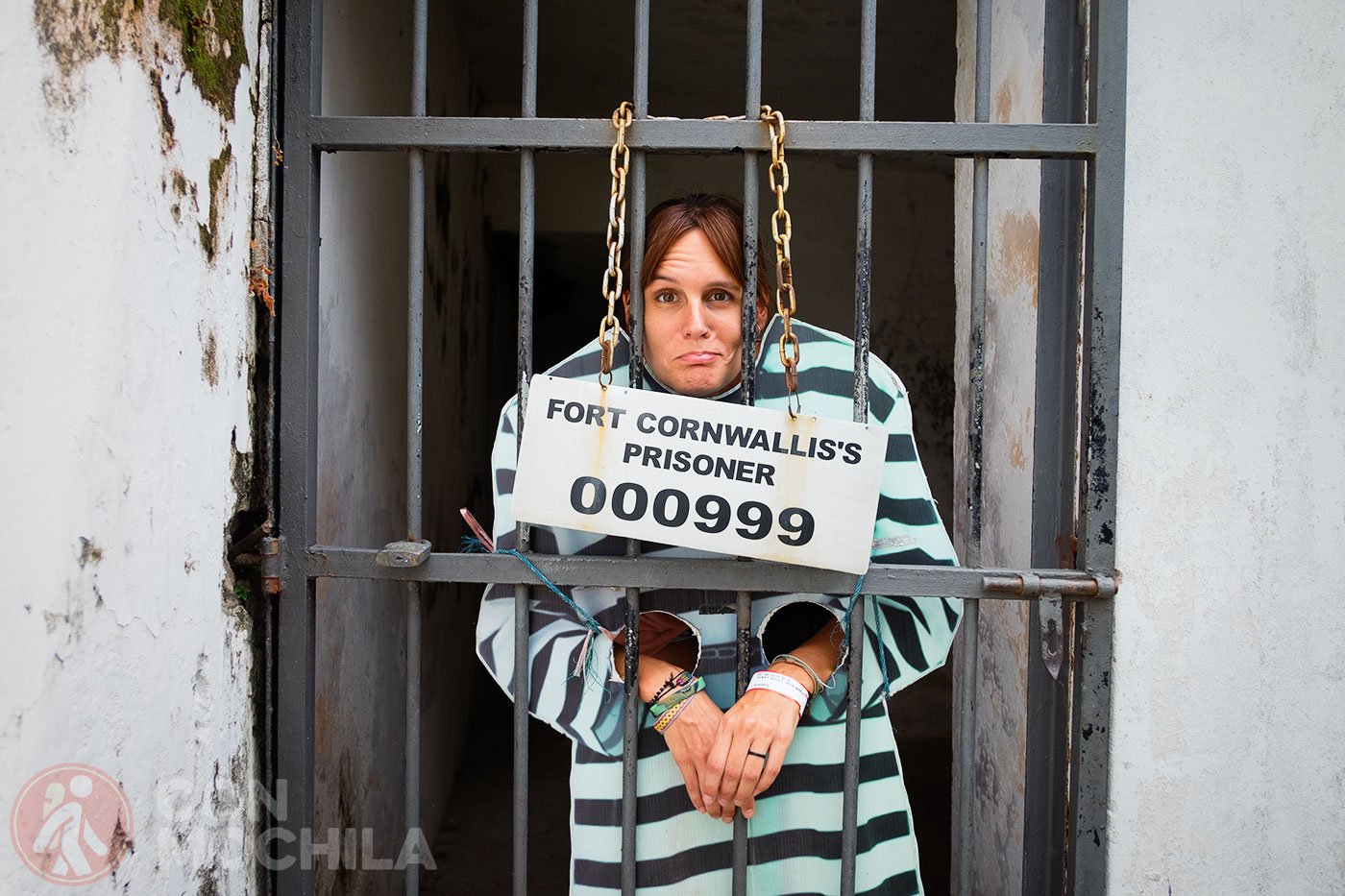
Inside you can still see the chapel, some cells and warehouses, as well as the Lighthouse. If you like history, the visit is interesting, since Fort Cornwallis was never attacked and remains in its original state.
The Clan Jetties are ancient settlements or floating homes of Chinese fishermen located on the jetties at the end of Lebuh Chulia. Each jetty represented a Chinese clan and was formed during the arrival of immigrants with few resources who could not build in the city, which had already been colonised by Europeans.
Nowadays it is a very touristy area, but it is part of the historical heritage of the city that advocates maintaining and preserving this traditional way of life.
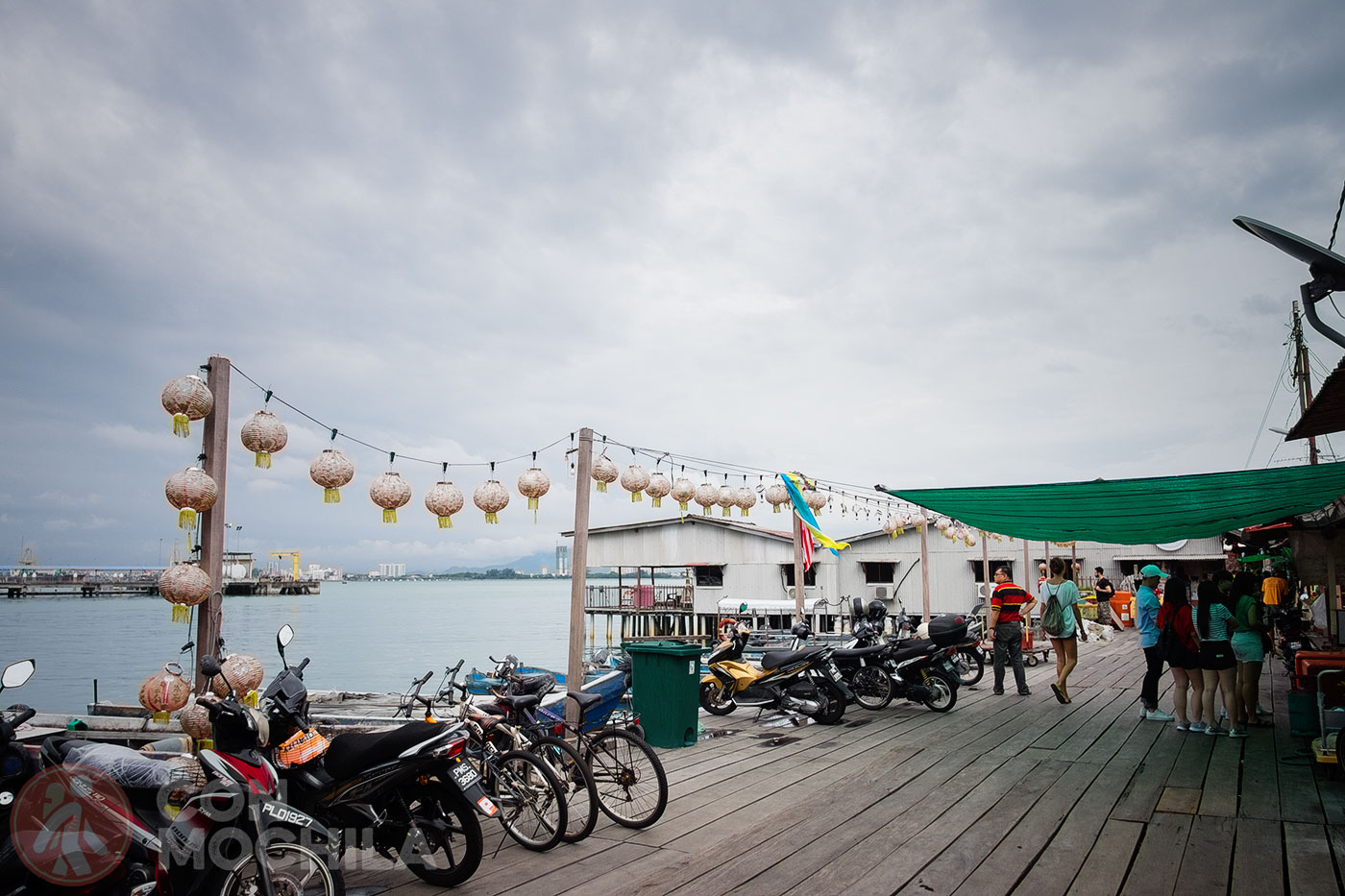
The Tan Jetty, owned by the Tan clan from Fujian Province in China, was built in the 19th century. It is now best known for housing a Thai restaurant.
Georgetown’s colonial architecture reflects the British and European presence on the island, coexisting with other cultures and peoples such as the Chinese, Malay and Indian. There is nothing like taking a stroll through its streets and discovering buildings from that period such as the Queen Victoria Diamond Clocktower, the Penang City Hall, the Supreme Court, etc.
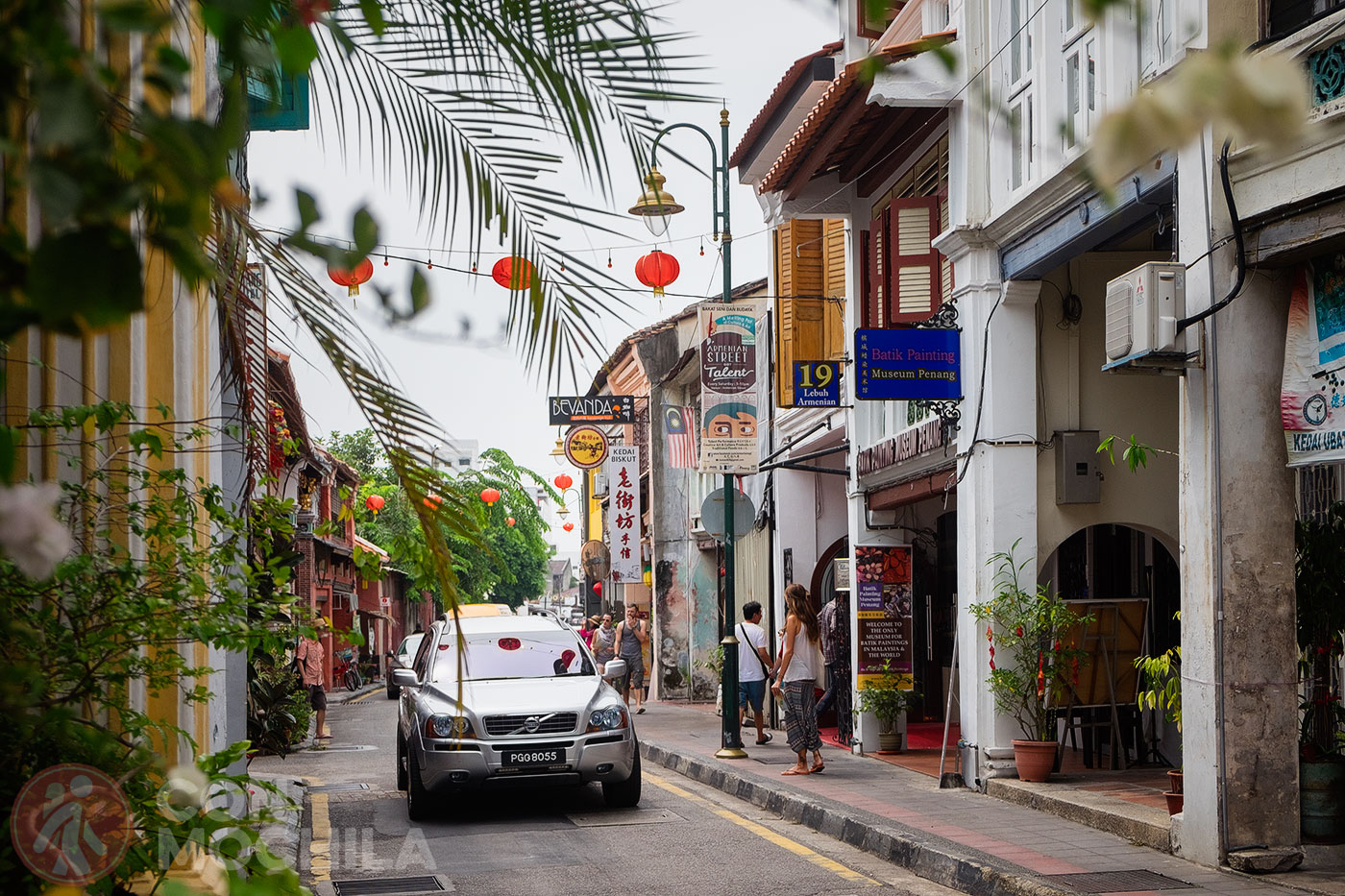
There is also a street called Armenian Street, named after the influence of the Armenian merchants who were once present in the area. Here one can find several museums and temples, as well as urban art such as the mural of children on bicycles.
We recommend this private guided tour of Georgetown to discover the ins and outs of this World Heritage city. On this tour you will visit the most popular streets and iconic buildings (Khoo Kongsi Temple, the Clan Jetties or the Pinang Peranakan Mansion) to discover its colonial past. The tour includes pick-up and drop-off from your hotel in Georgetown area.
As we have already mentioned, the capital of Penang is a city famous for its gastronomy. We recommend this gastronomic tour through the streets and street stalls of Georgetown, trying up to 15 typical dishes where you can experience this cultural fusion that we love to talk about (and enjoy) so much.
If you’re more into active tourism, you can get to know Georgetown and Penang on a bike tour. After being picked up from your hotel in Penang, you’ll spend 4 hours riding through the bustling streets of Georgetown and then wandering around the outskirts of the city, visiting fishing villages and vast rice fields.
Penang National Park is located 20km northwest of the island, and can be reached by bus 101 for 4 ringgit per person per trip. Entry is free, you just need to register in a book in the office at the entrance. Once inside there are a couple of routes to follow.
We chose to go and see Kerachut beach and the path was well signposted and had some sections with ropes, steps and platforms that made it more accessible and easier to walk.
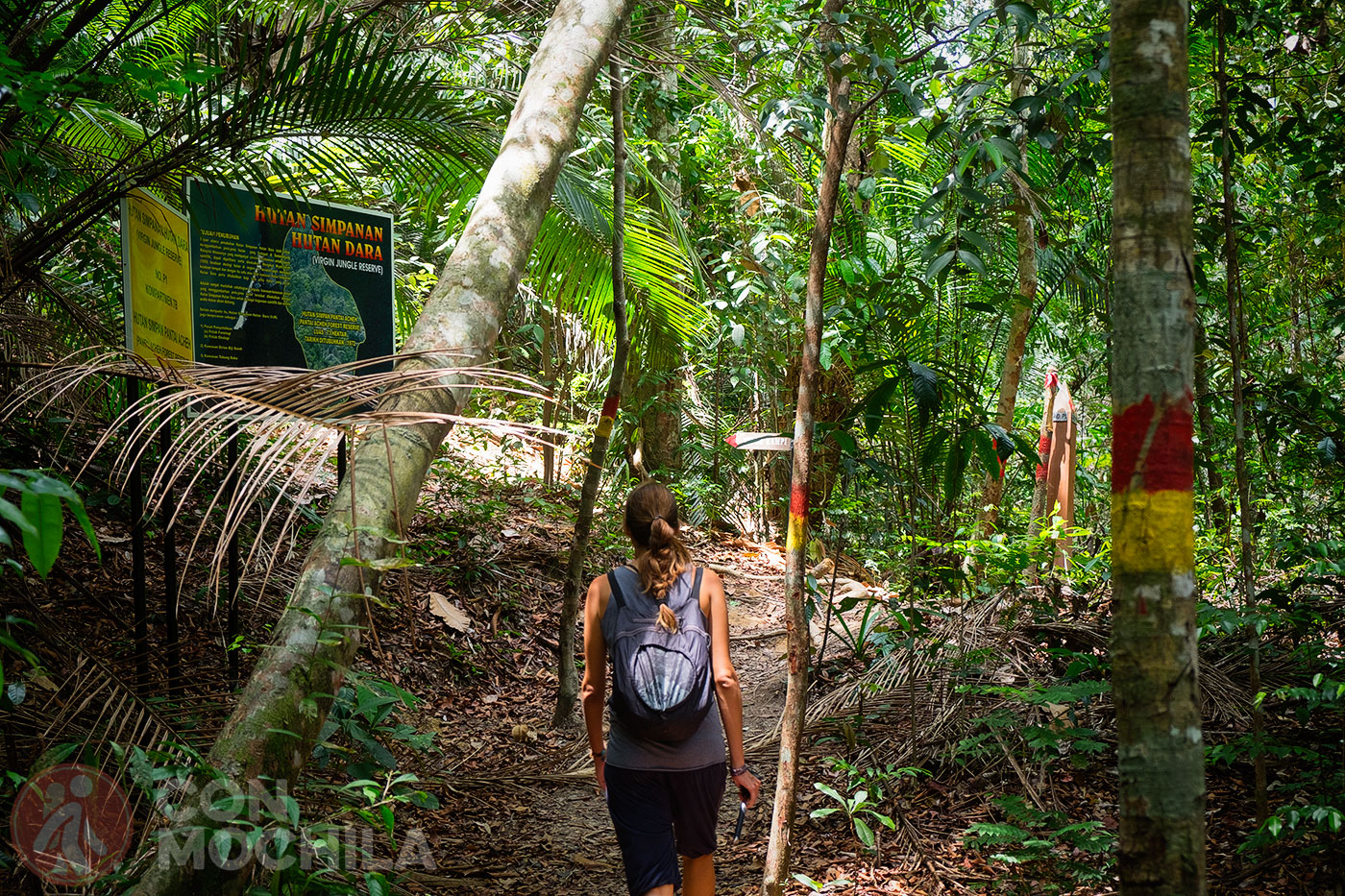
It took us about 3 hours to do the round trip with a short break on the beach. It was short because when we arrived about 100 young people had taken it over and were doing activities. Just before reaching this beach there is a campsite where we saw a couple of groups camping.
It is said that it was Captain Light who created the first road up Penang Hill, a group of hills located 6km from the centre of Georgetown in Air Itam. At the time, the British colonised this area to escape the heat on lower land.
Today, each of the hills houses different “attractions”, from a hotel, to a Hindu temple or a mosque, walkways between trees, trekking routes or terraces where you can observe the landscape of ancient forest and the different species of birds and small animals (flying squirrels and monkeys) that inhabit this ecosystem.
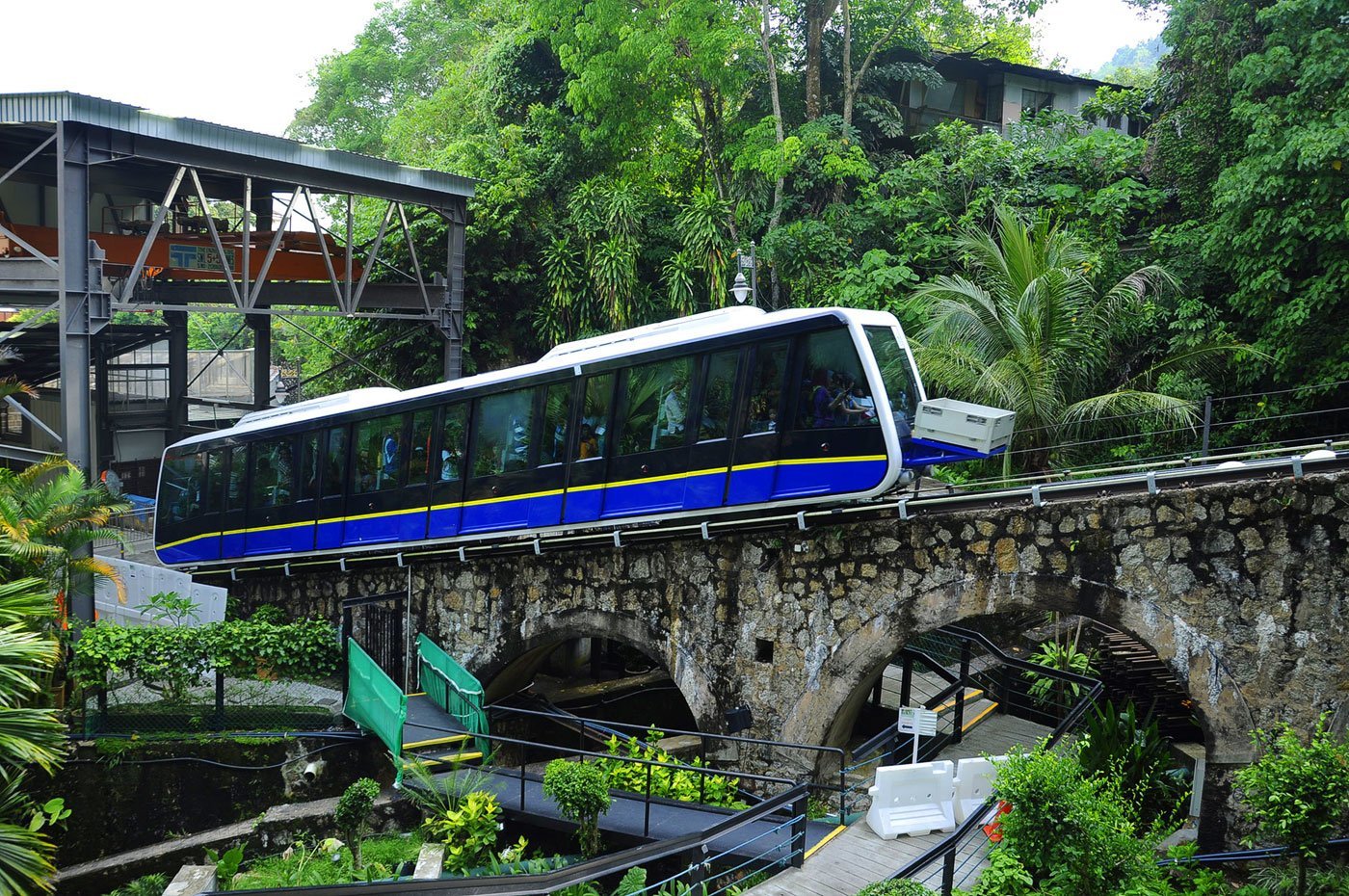
Most people take the funicular train from the Penang Hill Railway Lower Station, although it’s also possible to go up by car or by hiking.
A great idea is to take a private excursion to The Habitat on Penang Hill, where you’ll be picked up at your hotel in Penang. During the trip, you’ll visit the Kek Lok Si Temple (the pagoda of the 10,000 Buddhas) and explore the jungle from above via a walkway, which you’ll reach using the funicular train.
If you prefer to visit the area on your own, here’s a link where you can purchase tickets to visit The Habitat Penang Hill and enjoy the jungle from this special terrace.
If, in addition to visiting Georgetown, you’d like to visit the island where it’s located, this private tour of Penang Island by minibus takes you along miles of white sand beaches, temples, and fishing islands. You can even decide which landmarks to visit. The tour includes pick-up and drop-off at your hotel in Penang.
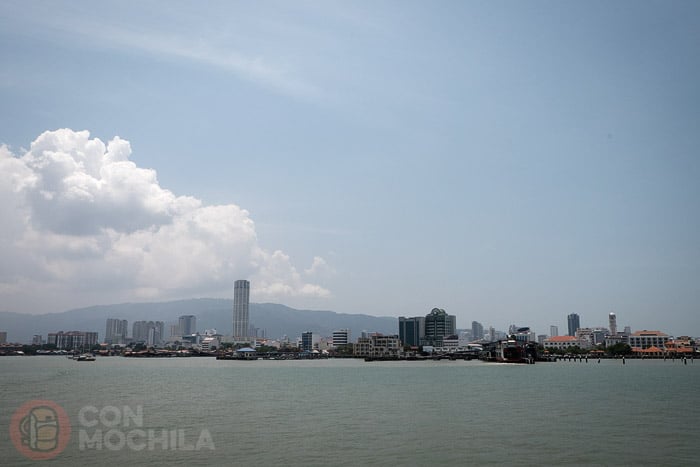
Teluk Duyung or Monkey Beach is a long white sand beach located in Penang National Park, in Muka Head and gets its name from the monkeys that inhabit the area and who love to eat crabs or leftover food that they steal from visitors.
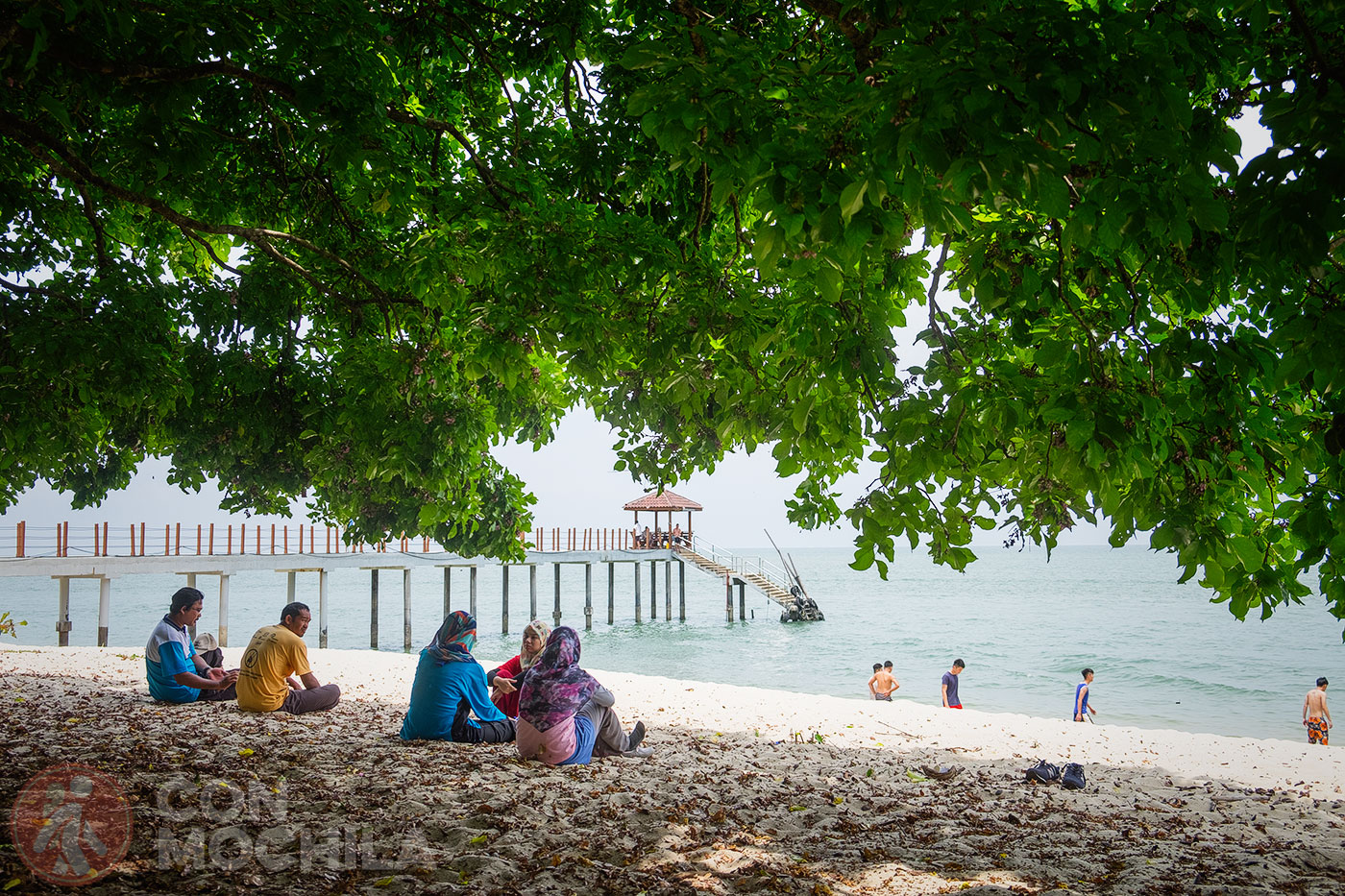
During the weekend it is packed with locals, but during the week it is usually quite quiet. There is no road access, so to get there you must rent a boat from the park entrance or walk along the coast for about 3.5 km.
Penang has a huge range of accommodation options, here are some places where we stayed:
Rope Walk Guesthouse: A clean, spacious and cosy guesthouse in a restored old building. It has a living room where you can watch TV or read and a small kitchen next to a bright interior terrace. There are dormitories for several people and double rooms like the one we chose. It has free wifi.
Red Inn Heritage Guesthouse: This guesthouse is located on Georgetown’s famous Love Lane. We stayed here for a week and although the rooms are nothing special, everything is very clean, including the (shared) bathrooms. The ground floor is cozy and has a seating area and a table where you can have breakfast
Lang Hoose residences: This lovely accommodation was the last one we stayed in in Georgetown, a few days before flying to Spain with Songkran. It is therefore pet-friendly, located near the Street Art area, and the people who run it are very nice and friendly. It has super cosy attic-style rooms.
You can also take a look at these recommendations:
In the city centre you can walk to almost everything, although you can rent bicycles to go to the outskirts or surrounding areas. Malaysia is a country with very good transport links and Penang is no exception; there is a bus and taxi service to get to any area.
As in most Southeast Asian countries, you have to negotiate if you want to get into a taxi as they don’t always have the odometer on. In these cases, you can also hire Uber or Grab by downloading the app.
If you are someone who likes to drink beer when you travel, like us, you should know that Malaysia is a rather expensive country for it, but in Georgetown we found an emblematic place where we can get our elixir at a moderate price: Antarabangsa Enterprise.
Below you can see all our favorite dishes from the Georgetown cuisine:
And then spread throughout the city there are thousands of other restaurants of all kinds (pizzerias or other types of international food, fast food chains…), although be careful because some are quite expensive.
Click on the image and it will take you to a new Google Maps window with all the points of interest to travel around Georgetown.